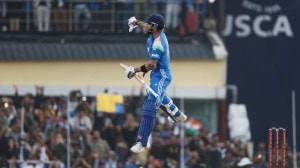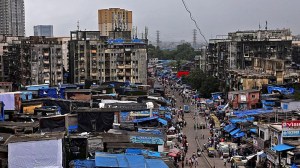There has been a slow but steady improvement in women’s representation in general elections since 1998 – both in terms of candidates and winners. A women’s reservation Bill was first introduced in Parliament in September 1996 by the H D Deve Gowda-led Janata Dal government, but the Bill lapsed after the government fell. Twenty-seven years later, the Bill introduced by the Narendra Modi government is set to be cleared by Parliament.
The 128th Constitutional Amendment Bill, 2023, seeks to put aside 33% of seats for women in the Lok Sabha and all state Legislative Assemblies. It also states that one-third of the seats reserved for Scheduled Castes (SCs) and Scheduled Tribes (STs) would be reserved for women belonging to these communities.

Several political parties, even those in the Opposition, have voiced their support for women’s reservation, though objecting to the fact that it will come into effect only after the next Census and delimitation after it, and that there is no provision for OBCs in it. Among the most vocal in its support for women’s reservation is the Congress, with former party president Sonia Gandhi saying the legislation “is ours, apna hai.”
Data shows that there has been a rise in the share of women candidates fielded by the Congress in the Lok Sabha elections since 1998, the first to be held after the 1996 Bill was introduced. However, even at its highest, in 2014, after the Congress had been in power for 10 years, this stood at just 12.93% – an analysis of data provided by the Trivedi Centre for Political Data showed. In 2019, the last Lok Sabha elections, the women’s share was slightly lower, at 12.83%.
The BJP has also seen an uptick in the share of women candidates. In 2019, 12.61% of its candidates were women, a jump from 2014’s 8.88%. In 2019, 74.55% of the women BJP fielded won, while only 11.11% of women fielded by the Congress did.
For the number of women in the Lok Sabha to go up, parties need to field more women candidates. Let’s take a look at how parties have fared in this since 1998.
In 2019, the top five states in women MP numbers were: Meghalaya (50%), Tripura (50%), Odisha (33.33%), Chhattisgarh (27.27%), and West Bengal (26.19%).
Story continues below this ad
The chart below shows the percentage of Lok Sabha seats won by women in 2019 (not counting bypolls). In absolute terms, Uttar Pradesh and West Bengal had the highest number of elected women, at 11 each. However, this made up only 13.75% and 26.19% of all the seats in the states, respectively.
Note: Only parties that secured 20 or more seats in the Lok Sabha in the respectives year were chosen for analysis. The data, which does not include bypolls, was taken from the Trivedi Centre for Political Data.
2019
Women made up only 9% of the total candidates. It was also the year with the highest number of women winners. The 78 women who won – out of the 726 total women candidates – made up only 14.36% of the overall winners.
Parties like the DMK, with two women candidates, and the YSRCP, which fielded four women, saw all of their women candidates win.
Story continues below this ad
More than 40% of the Trinamool Congress’s elected members were women. The TMC has been pushing for the women’s reservation Bill to be passed “without further delay”.
Overall, the current Lok Sabha has 82 women, including winners of bypolls.
2014
This general election came after the UPA government’s 2010 failure to enact reservation for women, even though the legislation was passed by the Rajya Sabha. Only 7.62% of the candidates fielded by all parties were women, and only 62 of the 670 women in the fray were elected. For the Congress, this meant only 6.67% of the women it fielded managed to win.
The BJD, which has claimed “credit” for the introduction of the Bill should go to Odisha Chief Minister Naveen Patnaik, had fielded two women candidates, with both getting elected. In 2019, the BJD went on to field seven women, of whom five won.
Story continues below this ad
The AIADMK, too, saw all four of its women candidates get elected.
2009
Only 9.77% of candidates fielded by the Congress were women, while women made up the 10.39% of the BJP’s nominations.
The Samajwadi Party’s (SP) 193 candidates had 15 women, while the JD(U) fielded three women among a total of 55 candidates. Both these parties – now part of the INDIA bloc – had earlier expressed support for a quota-within-quota for SC/STs and OBCs.
On Tuesday, SP chief Akhilesh Yadav tweeted, “In this (Bill), reservation for backward, Dalit, minority and tribal women should be clear in definite percentage form.”
Interestingly, in 2019, the SP fielded 49 candidates, of which six were women and none of them won.
Story continues below this ad
As per a PTI report, the JD(U) has claimed that the Bill was “inspired” by Bihar Chief Minister Nitish Kumar, who brought 50% reservation for women in local body polls.
The JD(U), in 2019, fielded just two women, one of whom won, among its 25 candidates.
2004
The Congress had the highest share of women in the fray among parties that managed to secure 20 seats or above in the Lok Sabha. The Congress and the BJP each saw 12 women get elected.
The RJD fielded only one woman out of a total 42 candidates. The RJD, an ally of the JD(U) in Bihar, has criticised the women’s reservation Bill, with former Bihar CM Rabri Devi saying that it “cheats” SCs and STs. However, it voted in favour of the Bill.
Story continues below this ad
In 2019, of the 21 candidates fielded by RJD, only three were women, and none of them won.
1999
Women represented only 9.39% of overall winners in a government that was elected soon after then-Prime Minister Atal Bihari Vajpayee lost a no-trust vote. In case of the Congress, 11.48% of the candidates were women, and 26.92% of them won. Meanwhile, 7.67% of the BJP’s candidates were women, with 61.54% of them securing wins.
Maneka Gandhi was the only Independent woman candidate to get elected in both 1999 and 1998.
1998
In 1998, the first general elections after the women’s reservation Bill was first introduced in Parliament, only 5.85% of the candidates fielded and 8.26% of the winners were women.

































